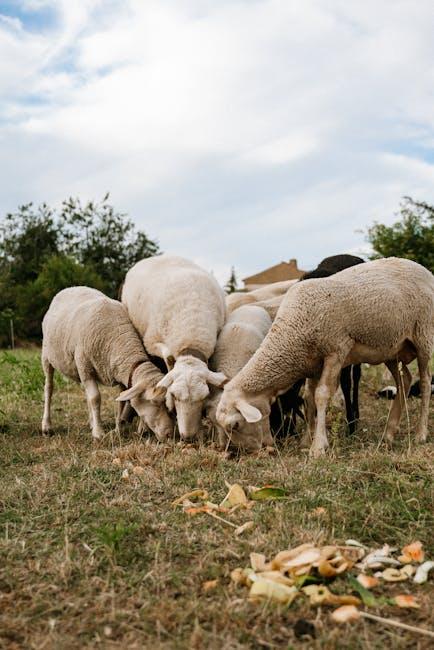
The Potential Key to Upgrading Toothpaste? Sheep’s Wool and Human Hair – The Washington Post
In the ever-evolving landscape of oral hygiene, toothpaste remains one of the most essential daily products we rely on. But what if the secret to the next toothpaste breakthrough lies in an unexpected place: sheep’s wool and human hair? Recent research highlighted in The Washington Post reveals promising advances by using keratin from these natural sources to improve toothpaste’s effectiveness and sustainability. Let’s dive into how these surprising ingredients could upgrade your oral care routine and why this innovation matters for both consumers and the environment.
Understanding the Basics: What is Keratin?
Keratin is a fibrous structural protein found abundantly in hair, wool, nails, and skin. It provides strength and resilience, which is why wool and human hair can be excellent sources. Scientists have begun exploring keratin’s properties to see how it could be used in various applications, including medical treatments, cosmetics, and now, oral care products like toothpaste.
Why Use Sheep’s Wool and Human Hair in Toothpaste?
Traditional toothpaste formulas rely on synthetic compounds and abrasive agents to clean teeth and promote enamel health. While effective, these ingredients sometimes pose environmental concerns or lead to harsh effects on sensitive teeth. Keratin-based additives could offer a natural and sustainable alternative by:
- Enhancing enamel repair: Keratin’s structural properties may help reinforce tooth enamel and promote remineralization.
- Improving texture and abrasivity: Natural keratin fibers provide gentle cleaning without excessive abrasion.
- Biodegradability: Unlike synthetic chemicals, keratin is biodegradable and environmentally friendly.
- Reducing reliance on petrochemicals: Using natural waste materials like wool from sheep and hair could lower the carbon footprint of toothpaste production.
Innovative Extraction and Processing Techniques
Extracting keratin from sheep’s wool and human hair poses challenges because keratin is a tough, insoluble protein. However, breakthroughs in green chemistry have enabled researchers to isolate high-quality keratin peptides without harmful solvents. Methods include:
- Enzymatic hydrolysis: Breaking down keratin fibers into smaller, usable peptides.
- Steam explosion technology: A sustainable method to open keratin’s tough structure.
- Reduction and extraction using eco-friendly agents: Minimizing chemical waste and improving yield.
These advanced techniques allow keratin to be incorporated into toothpaste formulations without negatively impacting the product’s consistency or shelf life.
Benefits of Keratin-Enhanced Toothpaste for Consumers
As keratin-infused toothpaste emerges on the horizon, potential benefits to users include:
- Stronger, healthier enamel: Supporting remineralization and making teeth more resistant to wear and decay.
- Gentle cleansing: Natural abrasives provide effective plaque removal without sensitivity or gum irritation.
- Eco-conscious choice: Using natural proteins helps reduce environmental impact.
- Potential for improved whitening: Keratin’s structure might aid in lifting stains without harsh chemicals.
Side-by-Side Comparison of Toothpaste Types
| Feature | Traditional Toothpaste | Keratin-Enhanced Toothpaste |
|---|---|---|
| Main Ingredients | Fluoride, silica, detergents | Keratin peptides, natural abrasives, fluoride |
| Abrasivity Level | Medium to high | Low to medium, gentle on enamel |
| Environmental Impact | Moderate to high; synthetic chemicals | Lower; biodegradable, sustainable sourcing |
| Enamel Support | Moderate | Enhanced enamel repair and remineralization |
| Suitability for Sensitive Teeth | Variable; some formulations cause discomfort | More suitable; naturally gentle |
Environmental Impact and Sustainability
One of the most compelling reasons for exploring sheep’s wool and human hair as ingredients in toothpaste is sustainability. Wool is a renewable resource, typically harvested as a byproduct of the sheep farming industry. Likewise, human hair, often discarded from salons or recycling programs, represents a plentiful resource that can be repurposed.
“Using waste materials like wool and hair reduces landfill waste and creates a closed-loop system for product manufacturing.” – Materials Scientist, The Washington Post
By integrating keratin into oral care products, companies could significantly reduce dependence on petrochemical derivatives and synthetic abrasives, which are often non-biodegradable. This shift aligns with growing consumer demand for eco-friendly and ethically sourced personal care products.
Challenges and Future Research
While promising, keratin-infused toothpaste technology is still in the early stages, and several challenges need to be addressed before widespread commercialization:
- Allergy and safety testing: Ensuring keratin supplements do not cause allergic reactions in sensitive users.
- Production costs: Scaling keratin extraction efficiently without driving up toothpaste price points.
- Long-term efficacy studies: Clinical trials to prove keratin’s benefits for enamel health over time.
- Consumer acceptance: Educating buyers on why wool and hair derivatives can be safe and effective.
Expert Opinions and Case Studies
Leading dental researchers endorse the keratin concept as a natural advancement in toothpaste technology. A pilot study conducted at a university dental center found that toothpaste with added keratin peptides improved enamel hardness by up to 15% after daily use for two months.
Dr. Evelyn Harper, a dental biomaterials specialist, commented:
“Keratin’s ability to integrate into tooth enamel offers a new pathway to reinforce teeth at the microscopic level with a naturally derived ingredient.”
Real-World Applications
- Eco-conscious brands: Several startups are already exploring keratin in personal care products, signaling consumer readiness.
- Regenerative dentistry support: Keratin could complement fluoride and calcium therapies.
- Potential fusion with other natural ingredients: Such as bamboo charcoal or aloe vera for multifunctional toothpaste blends.
Practical Tips for Choosing Natural and Sustainable Toothpaste
While keratin toothpaste is not yet mainstream, consumers can prepare by considering these points when selecting oral care products:
- Look for natural or biodegradable ingredients: Avoid parabens, sulfates, and artificial dyes.
- Check for certifications: Eco-labels or cruelty-free badges can indicate sustainable practices.
- Consider sensitivity formulations: For sensitive teeth, opt for gentle abrasives and soothing agents.
- Support innovative brands: Choose companies investing in renewable ingredients like keratin from natural byproducts.
Conclusion: A Woolly Revolution in Oral Care?
From the pastures of sheared sheep to your bathroom shelf, the journey of keratin from wool and human hair to toothpaste epitomizes innovation blending nature and science. While it may sound unconventional, this emerging technology promises gentler, more sustainable, and potentially more effective oral care products. As the research matures and market availability expands, keratin-enhanced toothpaste could well become a new gold standard in protecting and strengthening our smiles naturally. For eco-conscious consumers and dental health enthusiasts alike, keeping an eye on this woolly revolution just might be worth it!
Stay tuned for updates as more clinical trials conclude and companies bring these unique formulas to market — your next toothpaste upgrade might come straight from nature’s own fibers.


